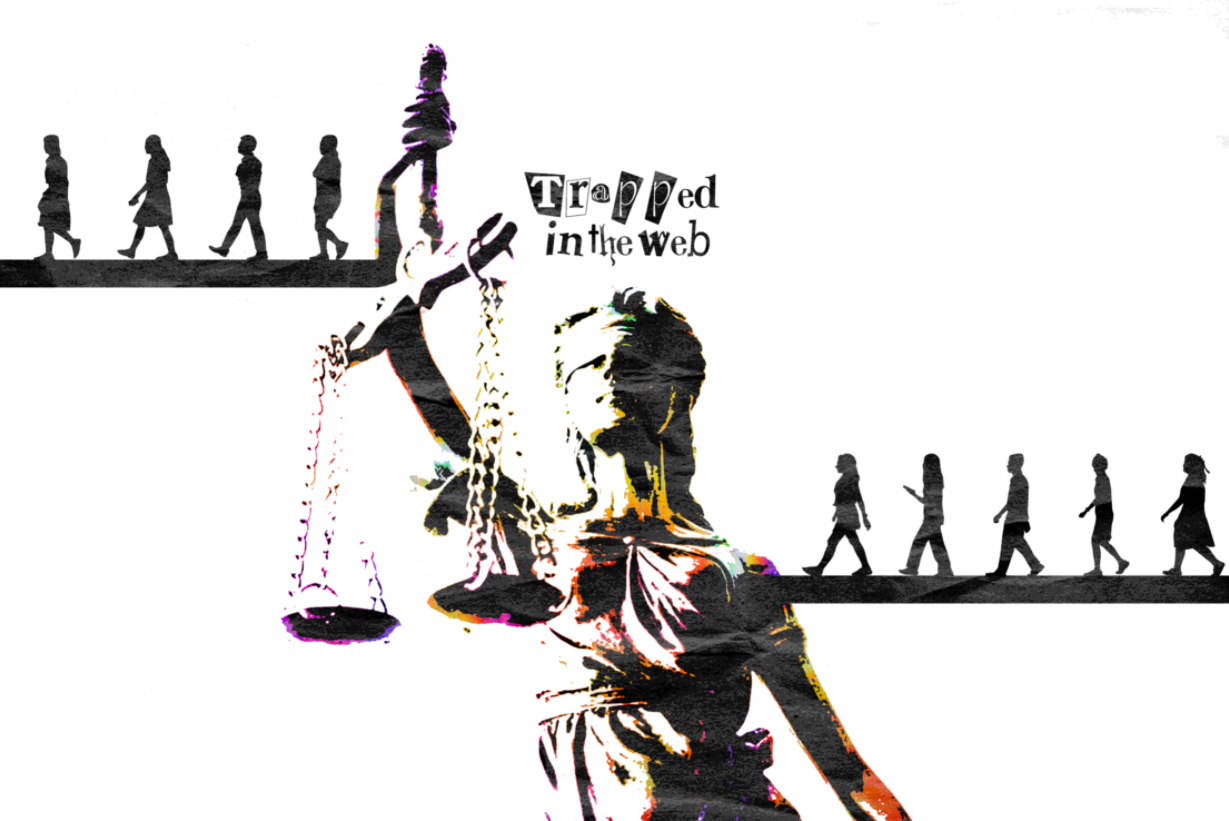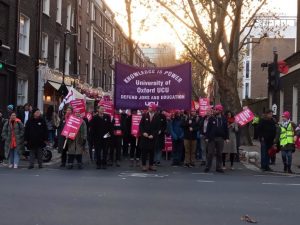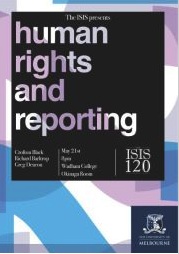
Reporting Racial Harassment at Oxford
by Mizan Rahman | August 28, 2021
The shadow over universities: racial harassment
Sophie, a student, is sitting at the bar on her university campus, when a few of her coursemates come in after a society social. Sitting across the room from her, the group gets louder, rowdier, harder to ignore. She is put on edge by their behaviour. One member of the group approaches her table – Tom, she thinks – and tries to get her attention. He thinks it would be funny to get her attention by shouting a racial slur. Sophie pretends not to hear, willing the moment away and hoping he’ll realise that what he’s doing is wrong, but Tom repeats the phrase. She is deeply offended.
In this scenario, Sophie may decide to report the issue under the university harassment procedure for several reasons: she might want it to be dealt with by the university body, or she might struggle to prove that a criminal offence occurred. The Chief Crown Prosecutor and national lead on hate crime, Chris Long, has made it a strong priority that hate crimes are charged to provide justice to many victims. Since hate crimes are defined by law as offending a victim’s dignity (as it is an insult to the very make-up of one’s unchangeable character), a crime motivated by a hatred of a person’s characteristics “adds another layer of seriousness”. The legal system has emphatically made it clear that racial harassment has no place in modern society.
Sophie’s story is not far-fetched. Incidents like these are happening far too regularly on university campuses. The Equality and Human Rights Commission’s (EHRC) 2019 inquiry found that 24% of students from an ethnic minority background said they had experienced racial harassment since starting their course. An undergraduate at a Welsh university said that on multiple occasions, she and her friends had the N-word shouted at them by fellow students, and had been told repeatedly she is “pretty for a black girl”. Another student, this time at an English university, says that their fellow students were “very nasty” and treated them as a “Black object”. At Oxford University alone, there have been several reports of racial abuse and racial insensitivity – including the defacing of a picture of a black man murdered by the police.
The law and racial harassment
Reports of racial harassment under the legal procedure are dealt with by a clear and well-established system, starting with a report filed to the police, followed by a written statement provided by the victim. An investigation is then opened, which the victim is kept up to date on. Despite the Crown Prosecution Service being able to use their discretion to decide whether it is in the public interest to favour prosecuting the aggressor, conviction rates for racially-aggravated hate crimes are high, around 85% since 2017.
As Sophie would learn, the same cannot be said about racial harassment reports at universities. The law does not place universities under any legal liability for student-on-student harassment, so each university decides their own internal procedure. Many universities use a formal written report as the last stage of their investigation, and this is the most likely stage that the investigation will reach. Across 141 higher education institutions that were surveyed in the EHRC 2019 inquiry, 57% of student complaints ended up in a formal report.
How do university procedures on racial harassment fail?
Unlike in the treatment of racial harassment reports under the legal system, universities have been slow to respond.
The same inquiry found that only 42% of student complaints of racial harassment were investigated, upheld, and ended with any action being taken against the alleged perpetrator across the surveyed institutions. More than half of those actions were merely a reprimand or formal warning. A freedom of information request at the University of Oxford showed that between 2016 and 2021, seven formal written complaints alleging racial harassment were made, of which only one was upheld. The aggressor in this case was given a written warning, asked to apologise, and made to undertake training. However, seven formal reports of racial harassment over five years does not capture the extent of racial harassment at the university. Even just by anecdotal evidence, any student of colour would rightfully suspect that this figure is incorrect, given that many cases go unreported. Those who report to colleges do not see full investigations into their concerns. Students of colour are not getting the justice they deserve.
Why are universities failing, and what is problematic about university procedures?
There are significant flaws in the University procedure that hinders its ability to provide redress to students of colour. The procedure not only fails to provide adequate outcomes to such reports, but it also prioritises the wrong duties during investigation. In reply to another freedom of information request, Oxford University reported no record of the proportion of academics of ethnic minority backgrounds sitting on disciplinary panels. In fact, at many colleges there are no academics of certain ethnic backgrounds. This is clearly an issue, since students of colour are going to be less confident that an accusation of racial abuse will be upheld if the disciplinary panel is made up of people who have never been the subject of racism.
Students who report racial harassment are also likely to be caught out by the overlap. If they have approached the wrong procedure it can result in wasted time and energy, including but not limited to having to repeatedly explain the incident. Jenny*, a BAME representative at an Oxford college says that: “the procedure was definitely not easy to report and navigate”, and this overlap works to the detriment of students – between 2016 and 2021, Oxford dropped five out of seven complaints because they fell outside the university context. Not only is this procedure confusing to students, but it also presents a misleading picture, since whilst the university may have few complaints, colleges have many awaiting investigation. This provides a way for some colleges to avoid transparency in their racial harassment reports since they can point to the deceptively low number of reports at the university level.
A student who has made a report can use the university harassment services, including the harassment advisers. However, students have found this support to be very limited. In theory, these advisers cannot get involved in a case and must be neutral, although one interviewee suggests that this is “not manifested in practice”. Beyond this, however, the confidentiality principle found in the university and various college harassment procedures is problematic. Jess*, who reported under an Oxford college harassment procedure made it clear that the college’s limiting of their outside communication was a real issue because it would be a breach of procedure for the victim to talk to anyone but the college welfare provision about the case. Victims are limited to poor welfare provisions and use avenues like peer supporters throughout this period – like a fly trapped in a spiderweb, they are caught in the impossibility of procedure, and forced to go without both personal and professional external support systems.
The consequences of inadequate racial harassment procedures
Harassment reports at the University and the college levels have failed to provide open justice to victims. Some students are left waiting for over half a year to discover the outcome of a complaint. The key issue raised was the prioritisation of the aggressor. Victimised students of colour are treated like mere reporters of an incident, and universities seem to forget that there is a student who has undergone racial abuse. The victim is not kept up to date with the developments of the investigation, as this would infringe upon the duty of care that both the university and its colleges owe to the perpetrator of the abuse. This is clearly the wrong priority, leaving students of colour feeling that the procedure does not protect them. Jamie* who reported under a college procedure feels as though the gravity of their report was not appreciated. During an interview, they made it clear that “transparency as to who is making the decision” was important, and that they and other victims felt let down by the procedure in not knowing the outcome. There is a disparity between university and college procedures and the legal system, with victims under the legal system placed at the centre of criminal justice, whilst students under harassment procedures are side-lined.
Not only are universities failing their students in providing outcomes to their reports, they are also failing in providing adequate welfare support. Josie*, a JCR president, says one key issue is that many colleges have a combined decanal and welfare team, so that welfare provisions are provided by the same people investigating the report. This means that any support given is unlikely to be helpful as those investigating must remain impartial. A student who has been the subject of racial abuse, who reported the issue under the college procedure, raised the same concerns, suggesting that the system is “paradoxical”. It is illogical for a college to provide welfare support for an issue they are causing, and it is self-explanatory why the students who make these reports do not want to seek help from the body that is causing harm to their welfare.
Even if a student can use the legal system to challenge their outcome, they are confronted with significant economic challenges. For students paying more than £15,000 a year for education and living costs, additional litigation costs are not feasible. Such a challenge incurs expensive legal costs to get the justice they were promised under the university procedure. If universities are committed to the idea that no one should be targeted for who they are, stronger protection is vital to hold universities to their duties to tackle racial harassment. Training and workshops are not an effective solution. College procedures need more radical reform.
Universities create a hostile environment for victims to report harassment. They do not take such reports seriously enough to provide any real punishment, which allows perpetrators to escape the process with their reputation untarnished. Unclear protocol, the prioritisation of the wrong principle, and ineffective redress all explain why students are reluctant to undergo formal procedures to report racial harassment. Reports in the legal system are twice as likely to be met with decisive action as under university procedures – the latter are begging for reform.■
*pseudonyms
Words by Mizan Rahman. Artwork by Alan Sulaivany




